Advice on growing medium- Bat flower
Need advice on growing medium for tacca integrifolia. It is a true tropical- even in 65% humidity, the leaf edges brown and die back. I want to make my own mix. Here are some excerpts from various online articles-
"grow best in well-drained, fertile soil. Keep soil moist, and do not let it dry out."
"very rich and well-draining potting soil. It prefers a potting media that contains 50% pine bark, 40% peat moss, and 10% sand, or similar combinations...Keep the bat flower's soil consistently moist; a saucer beneath it will help insure this."
"The mixture needs to be light, very porous, something that drains well. Use something like: 60% Canadian peat moss, 30% perlite, 10% vermiculite. The soil should be a little bit acid"
So what I am getting out of this is, soil must be 1. well-draining 2. light 3. consistently moist 4. slightly acidic
The soil it came in is remarkably fluffy, and I am uncertain how they did this.
Comments (36)
pirate_girl
9 years agolast modified: 9 years agoFYI: peat drains terribly, anything using 60% will have horrid drainage, as is slower than molasses.
Related Professionals
Allentown Landscape Architects & Landscape Designers · Piqua Landscape Architects & Landscape Designers · Roxbury Crossing Landscape Architects & Landscape Designers · Clermont Landscape Contractors · Norwood Landscape Contractors · Arlington Landscape Contractors · Barrington Landscape Contractors · Fort Atkinson Landscape Contractors · Fuquay-Varina Landscape Contractors · Homewood Landscape Contractors · Newnan Landscape Contractors · Stallings Landscape Contractors · Sugar Hill Landscape Contractors · Caledonia Interior Designers & Decorators · Bloomingdale Interior Designers & Decoratorsdellis326 (Danny)
9 years agolast modified: 9 years agoLooks like that is long fibered sphagnum moss, not peat moss.
The one time I had that plant I grew it with semi-hydro and it never browned up at all Unfortunately a window got left open as it got colder and I lost the plant. They can be very sensitive to temperature changes.
You can set it up in S-H using only long fibered sphagnum with no other media. many plants do very well like that however the sphagnum will break down after 2 to 4 years. Something like Growstone or LECA may be preferred because it never breaks down.
Grownstone is recycled & sintered glass and it slowly releases silica into the water over time but is more or less PH neutral and LECA is porous clay, usually balls but not always, the whole thing sits it a nutrient solution (Water and Nutrients) and is always moist with more than enough air getting to the roots.
lauraeli_
Original Author9 years agolast modified: 9 years agoGood to know, pirate girl. I currently have course pine bark, perlite, peat moss, sand, and miracle gro potting mix on hand.
Im not at all familiar with semi-hydro... A little hesitant to go 'experimental' on a plant that is not easily replaced. But more than that, Im open to what works! I suppose it is high-time to research S/H.
Also... isn't long-fiber sphagnum very light in color?
pirate_girl
9 years agolast modified: 9 years agoForget the sand too, it's only going to create problems, unless it's very coarse sand like builders use.
No, long fiber sphag I've seen is brown like peat moss, not lighter in color.
petrushka (7b)
9 years agolast modified: 9 years agoi grow all moisture loving tropical plants in wicked semi-hydro, but i do not use lecca or the like: i use soilles mix . it varies from plant to plant. it's like wicked AV's. except with larger wick and the inside is lined with coir fibre matting (like hanging baskets) to provide better wicking up the sides + aeration.
the wick is outside coir, not inside the mix.
been doing it for years.
the rule is perlite has to be 40-50% of the mix for good wicking.
tropicals want rich and moist top to bottom which means peat (too much bark and it'll dry up fast on top).
coir peat is superior to peat-peat. and NZ (white) long fibre peat is excellent and could be used as 100% for anthuriums, epipremnum and polypodium ferns - but do not pack it, keep it soft. i avoid canadian sphag if possible - it's very twiggy and not soft enough for me.
the simplest mix (begonias/caladiums/ferns) is AV soil and perlite 1:1.
or cactus mix instead of AV or citrus/palm.
for grainier mix peat/small bark (like fine orchid bark)/perlite in eq. proportions is recommended by professional growers. (it will bottom-wick too). that is suitable for aroids: spath, alocasia, calla, syngonium, philos,etc and also crotons/citrus/amaryllis/aglaonemas/aralias/ficuses.
though i grow all of them in exoticrainforest recommended 'jungle mix'. site was sold, so here's the approx recipe:
2 parts peat-based soilles (AV for me) mix + 3 parts peat ( coir for me) + 2 parts perlite + 3 parts fine orchid bark mix + 1 part sphag peat, 1 part vermiculite-optional (i dont add it) . can add some cut LF sphag pieces too .
i double the perlite - for wicking. orchid mix usually contains some charcoal too and some perlite. AV mix also has some perlite/vermiculite. so the final mix has more perlite then apparent.
i am sure bat-flower is similar to some of the plants that i listed. since i dont' grow it, may be smbody else can tell you which plants it's closest to in culture.This post was edited by petrushka on Fri, Jun 27, 14 at 14:39
petrushka (7b)
9 years agolast modified: 9 years agofor me UofFl growing guides is a great source of info on all tropicals. see below.
based on their description - i'd say it's close to begonia rieger for water consumption and drainage: lots of water and fast drainage.
including tropical temps/humidity - makes it closer to anthurium, which also need loads of water.
if you decide to go with 50% of bark - i'd recommend mulching with LF sphag for humidity and to keep top of the mix moist.Here is a link that might be useful: bat-flower culture
This post was edited by petrushka on Fri, Jun 27, 14 at 14:54
lauraeli_
Original Author9 years agolast modified: 9 years agoIve only seen the sphagnum that orchids are grown in, and it is more of a sandy color.
I do not currently have a ready supply of sphagnum moss, but I do like it for my orchids.
lauraeli_
Original Author9 years agolast modified: 9 years agoThat is all very good info, petrushka. Would these mixtures work well minus the wick watering? I like to top water.
petrushka (7b)
9 years agolast modified: 9 years agoyep. i switch periodically from wicks to top-watering. but wicks are always there for use when i am away for weeks or exhausted or busy - i have way too many plants to sustain the will to water endlessly ;).
the wicking always requires more aeration - so in case of bat-flower it should be a plus.
the light-colored orchid sphag IS nz sphag. i repot my orchids in bark mix with same sphag, so i have left-overs usually that i reuse for mixes.
otherwise you'll need to mail-order, prolly.
if you have only coarse bark AND you use a lot of it - there's a danger of drying up too fast. it also needs more time to rewet when dry - necessitating dunks in water.
which actually could be good for BF, provided it drains fast and you dunk often.
coir peat/matting rewets instantly and maintains aeration even when wet. check your hd for mg expand-n-gro ...that's coir peat or order compressed bricks. it's good stuff for any plant. roots love it.
repti-bark from pet shop is finer and can be used - but is more expensive.
i have great difficulty getting most any stuff besides av/mg/perlite mix in nyc. even orchid bark - lots of orchid shops, but no bark !pirate_girl
9 years agolast modified: 9 years agoPetruska,
I see barky looking orchid mix at most BBG, definitely at HD. Is that of no use to you? Also at the Botanic Garden Shops (tho' I'm sure it's pricey). (If I recall correctly, they're Hoffman mixes.)
lauraeli_
Original Author9 years agolast modified: 9 years agoThanks for the info on expand-n-gro! I wasnt sure where I could find coir peat.
I am sifting through the orchid bark as we speak, to get more uniform pieces. I should have 3 different sizes when Im done- coarse, medium, and super-fine.
I would love to feel confident enough in the whatever mix i use to water twice a week (or more) and know the roots are happy and aerated.
And optional wicking is a great idea! That way I know if I am gone for a few days or even a week, my plants will be fine while Im gone :-)
petrushka (7b)
9 years agolast modified: 9 years agoare you planning on putting it outside in the heat, or is it just indoors? 'cause outside it'll dry up much faster.
that guide i linked too said it requires loads of water to grow big.
pg,
both my hd and botg hoffman mixes are coarse bark - that is too big. i did get orchid espoma coarse anyways at the nursery though. it's quite soft - i break/cut it by hand !!! fortunately i just needed it for very small plants. so ... looks like i'll give a repti-bark a go...
or break-down and order everything-everything....:0..lauraeli_
Original Author9 years agolast modified: 9 years agopetrushka (7b)
9 years agolast modified: 9 years agothe medium and fine are good to use. you can use coarse as mulch on top or for smth else,
by the way check the soil it's in. chances are it's coir peat - most nursery plants grown in fl come in it. the feel is very different from reg peat - it's kind of pleasantly grainy. if it is - keep it, don't remove it from roots, just tease out some, if it's loose. coir peat actually comes off the roots very easily, unlike reg peat.
if you're planning to remove soil, then just add it back into the mix. it can be reused.
check out florida forum. search for 'bat flower' - jane_ny is a very experienced grower. she put hers in orchid bark with mg and some LF sphag. but it's outside, of course.
some cool ways so save the seeds there too. and great pics too.
i doubt if anybody here will post about it.
is this MG coarse orchid bark you are using? how much by volume you have of med ? fine?This post was edited by petrushka on Fri, Jun 27, 14 at 19:24
lauraeli_
Original Author9 years agolast modified: 9 years agoYes, miracle gro coarse orchid mix. It ended up maybe 40 percent coarse, 30 percent medium, and 30 percent fine. It was an 8 qt bag and there was 6 or 7 qts left that I ended up sifting through.
petrushka (7b)
9 years agolast modified: 9 years agooh, i might consider sifting then...i hate that! but i need it badly.
thanks.tapla (mid-Michigan, USDA z5b-6a)
9 years agolast modified: 9 years agoHumidity levels are usually a secondary contributor to the symptoms of necrotic leaf tips and margins, with the primary cause usually centering on a triangle formed by soil choice, watering habits, and the TDS (total amount of dissolved solids [salts]) in the soil.
Soils based on fine particulates like peat, compost, composted forest products, coir, sand, topsoil/ garden soil ...... retain excess water that inhibits root function (or promotes root diseases), and makes it very difficult to water copiously enough to prevent salt build-up in the soil solution w/o suffering consequences related to excess water retention. This singular issue, centering on soil choice, is what brings more growers seeking remedial advice to the container-related forums than any other, by far.
A healthy root system is the foundation conventional container plantings are built on. Since a healthy plant isn't possible w/o the prerequisite of a healthy root system, it's worth the effort it takes to get to the point where healthy root systems can be counted on as a given, unless something extremely unusual pops up to spoil the fun.
Please consider my offering as the opening comments to a dialog, if you want one. If you'd rather chase the issue to ground on your own, I wish you good luck & much success.
Al
lauraeli_
Original Author9 years agolast modified: 9 years agoAl, I would love your advice on this one. Im perfectly happy to grow in sub-par soil usually, but this is a fussy plant, and I knew that when I bought it. It's not just going to take whatever I throw at it and flourish. Likely the tips are drying because I am afraid to water it as much as it would like. If you have a suggestion for soil which can be watered generously without fear of root damage, and yet not dry out, please, suggest away. I am not comfortable growing in a typical gritty mix as this plant cannot take drying out. It loves water.
I do have the bark mix above. I was considering amending what amounts to bark fines, shown in the picture.
On a side note- this plant is watered with spring water, like the majority of my plants. It has not been fertilized since I got it two months ago. So the browning tips are not likely to be from excess salts. I believe the problem would disappear if the plant were watered ideally. Fix the soil, fix my confidence in watering.
This post was edited by Lauraeli on Sat, Jun 28, 14 at 10:53
tapla (mid-Michigan, USDA z5b-6a)
9 years agolast modified: 9 years agoWhen you read books about how to grow this or that plant, the writers often seem to suggest that plant A prefers this type of soil; B another type, and C yet another type of soil. Essentially though, they're not really describing different types of soil, they're discussing what's readily available.
If you were reading about growing tomatoes, you might read the best soil is one that drains well and is rich in compost or other organic amendments. Well - aren't those ingredients at odds with "drains well"? Of course they are. Too, if we factor in the fact we can grow really pretty/yummy tomatoes hydroponically, and I've had best results in a bark-based mix with nary a shred of compost in sight, it leaves us with suspicions about how important all this rich earthiness is to our containerized plants.
The truth is, almost all the plants we grow as houseplants want the same thing. A soil that holds enough water to keep the plant hydrated and working w/o the limitations of drought stress, and enough air that roots can most efficiently carry on their work w/o the limitations posed by soggy soil conditions. That's it, unless we count the fact the soil can't be made of things toxic to the plant.
Since providing nutrition for our plants is monkey easy, it makes sense that we focus on a soil's ability to provide enough water and air. Plants operate most efficiently when the soil is damp. As the soil moves from damp to dry, drought stress is followed by severe symptoms. As it moves from damp to wet, that is to say from no soggy layer at the bottom of the pot to a pronounced soggy layer, several things occur. First, lack of O2 kills fine roots within hours. Second, lack of air inhibits the root's ability to absorb water/nutrients and move them about the plant. Third, the roots killed by saturation need to regenerate in order to support top growth. No new top growth will occur until the root mass is sufficient to support it; so the cyclical death and regeneration of roots killed by soggy conditions taxes the plant in a direct relationship with the volume of roots lost, potential that can never be regained. Last, if you can't keep the roots healthy, you can't keep the plant healthy. Done deal.
If asked what the formula is for healthy plants, the answer isn't all that easy unless you look at things from the plant's perspective. The key issues for almost all houseplants are the grower's soil choice, light, and nutrition. Obviously, I think soil choice is the most limiting factor thwarting the average growers efforts. Light is what it is - try to provide as close to the 'right' light as you can. Nutrition is monkey easy. Soil choice, in summary, should be such that the plant is getting enough water to prevent drought stress, but not so much water it impedes root function or causes diseases and spoiled foliage. The easiest way to achieve this, is to use a soil with particles large enough that the soil can't hold water between the soil particles; rather, water retention would be in water held within or on the surface of soil particles. Once we shift to a soil that supports perched water (a soggy layer at the bottom), limitations start to appear and grow commensurately more severe as the level of water retention increases. To be more accurate, I should have said as the ht of the perched water table increases.
I know you know we can't water on a schedule because of the different 'needs' of different plants. Some plants would be under-watered and some over0watered. Why is it that I've been watering on a schedule, inside and outside, for about 20 years? I've posted enough pictures of healthy and unique plant material for people to know I have no problem keeping plants healthy ...... so if I water on a schedule, why doesn't it ruin plant health/appearance? Because the soils I use hold little or no perched water. Because of that, the soil remains well-aerated from top of the pot to the bottom, and because of that, the limiting issues inherent in soils BASED on fine particulates and poor structure are taken nearly completely or completely out of play.
For most growers, I strongly suggest they expend their efforts to eliminate or mitigate the factors that are most limiting to their plants. It's always the MOST limiting factor that affects an organisms well-being (Liebig's Law of the Minimum), so it does no good to concentrate on spraying with a miracle concoction when the plant's roots are rotting off or it's about to bake in a hot spot. Our abilities as growers are defined by how well we're able to eliminate the factors that impose limitations on our plants. Problems with poor soils probably represent the highest % of issues that bring people here for remedial advice. It just makes good sense not to skip over that fact and move on to something easier to deal with. I'm not preaching that at you, just making a blunt statement in an effort to keep the obvious in the light.
Thanks for providing the opportunity.
Al
lauraeli_
Original Author9 years agolast modified: 9 years agoI understand the concept, of course. It is a credit to you that I can read through that whole thing without my mind wandering to puppies, or supper, or philosophical questions of life and the universe...
If you could make a suitable suggestion from the things I have on hand: Coarse bark, medium bark, bark fines, perlite (and styrofoam beads, same size), aquarium gravel, long fiber sphagnum, and of course, peat moss and peat moss based potting mix.
I would like to amend the bark fines, if possible.
tapla (mid-Michigan, USDA z5b-6a)
9 years agolast modified: 9 years agoTry mixing bark, perlite, and peat or potting soil so the end mix is about 75-80% particles from 1/10 - 3/8". It might not be necessary to screen anything (I never screen the bark-based mixes), unless the bark obviously includes a large fraction of fines. Mix in 1 tbsp. of dolomitic lime per gallon or a half cup per cu ft. That's it.
It should end up looking something like this
{{gwi:20508}}Or this (in the middle - when dry)
{{gwi:2389}}If your bark looks like what you see at 3, 6, or 9 o'clock, you're in good shape.
Al
garyfla_gw
9 years agolast modified: 9 years agoHi
Did you check out the discussion of Bat plant on the Florida forum?? Jane is growing a gorgeous black specimen that is flowering well. While she is growing it outdoors should be a lot of help for you/
i used to grow the green variety T palmata but "Wilma put a shed on top of it and it took 3 weeks to dig it out . Would you believe it died ?? lol
If others are interested "Wellspring gardens " has both the black and white forms but not the green. Small but under 10 bucks garylauraeli_
Original Author9 years agolast modified: 9 years agoYes I did check that, Gary :-) She grows them in 50 percent bark, 50 percent MG soil, with a big scoop of perlite. My initial thought was to use bark fines, with some perlite, and peat moss if necessary. Al is recommending the larger size bark, I think...mine has already been screened. The smaller bark fines were sifted through a mesh colander, even.
I dont really like sphagnum peat, I dont like the way it dries itself into a block. I like to think it is never 'necessary' and I am going to leave it out of the mix this time. After testing the bark fines for a few days, I am quite happy with the drainage, as well as the moisture retention. In the same circumstances where potting mix would have remained soggy and uninhabitable, the bark fines drained and remained airy. It is in an semi-transparent container without drainage, and I can see the perched water table is very low. Not as low as the coarse bark might be, but I have used that for my orchids and it makes me uncomfortable. I do much better with the ones grown in long-strand sphagnum.
I do want to add gravel and maybe styrofoam beads? I think they would keep the mix light and airy, but then, I have never tried it. I may add back in some of the coarser bark as per Al's suggestions.
Also- the dolomitic lime is unnecessary with a plant that likes an acidic mix, correct? I dont have any on hand.
tapla (mid-Michigan, USDA z5b-6a)
9 years agolast modified: 9 years agoIf you mix 50% MG soil and 50% bark, you might as well be growing in all MG. The reason is, the MG fills ALL the large macro pores, essentially robbing the soil of the aeration you're looking for. Also, after a few waterings, the ht of the PWT in a mix of half MG half chunky bark will be the same as that when using straight MG. In order to gain aeration when mixing coarse and fine material, the fine material volume must be below the threshold level; it takes to fill all the spaces betyween the large particles.
A pint of marbles has lots of air space, but a half pint of sand in the mix will spoil it all. Another way to look at it is by asking how much perlite it takes to make pudding drain well. A 50/50 mix still gives you a pudding consistency with 0 air space. MG is the same.
Plants that "prefer" an acid soil, don't always like it. In nature, other species often out-compete less vigorous species on their favorite soils or where they might prefer to grow, so where you FIND plants in nature isn't a reliable indicator of their pH preferences. Also, the reason some plants are found in soils with high or low pH, is because they might have trouble controlling uptake of a certain element in soils with a pH that makes that element soluble and readily available for uptake. In containers, pH is usually affected significantly by the fertilizer you use. FP and MG, for example, are acid-forming fertilizers and lower pH with their use. Finally, if you use a fertilizer that provides all the essential elements in soluble form, pH is much less a consideration.
I grow a ton of plants that are noted as preferring an acidic soils, but I have no problem keeping them very healthy when I use the 5:1:1 mix with dolomite ..... and if you're not using a fertilizer with Ca and/or Mg, your plants need a source for those elements in a favorable ratio. Dolomite fits that bill.
Gravel and Styrofoam beads can contribute to aeration if the fine ingredients are in the soil at less than threshold levels (but not if fine ingredients are filling all the pores). They also decrease o/a water retention, which is a good thing if you use a soil with perched water, and not such a good thing if your soil doesn't hold perched water - for the later, it just increases the frequency at which you'll need to water.
Al
lauraeli_
Original Author9 years agolast modified: 9 years agoI do know that a lower ph can protect plants from fluoride in tap water. Of course, I water sensitive plants with spring or distilled water, so that isn't relevant to me.
It would seem to me that all potted plants are growing in an acidic medium. Peat moss lowers the ph. Bark lowers the ph. Fertilizer lowers the ph. But as far as the dolomitic lime goes, Ive no idea where to buy it.
tapla (mid-Michigan, USDA z5b-6a)
9 years agolast modified: 9 years agoContainerized plants generally do better at a full pH number LOWER than plants in the ground, so a pH of 5.2 in containers instead of 6.2, roughly. It's virtually impossible for the hobby grower to 'maintain' a pH level within a full number spread in containers. Too many variables affect pH, which commonly changes by the hour. Greenhouse growers with fluoride toxicity issues commonly use dolomite to RAISE pH for fluoride-sensitive crops, like dracaena and chlorophytum, to a pH north of 6.2 to about 6.5 being accepted as the place to be if fluoride or boron are concerns.
Distilled water is, or should be free of ions, but spring water can still have high levels of dissolved solids. On average, spring water has roughly the same amount of dissolved solids as plain tap water - some lower, and some higher. If spring water is transported, it must be chlorinated or ozonated to prevent bacterial contamination. It is later dechlorinated, but most of the dissolved solids it contains are left behind. Distilled or R/O water has the lowest level of dissolved solids - usually ). I have a small R/O water system for watering indoors and for drinking water. It has a built-in TDS meter which for the last 18 months or so that I've had the system, registers 0 PPM of dissolved solids after treatment.
Al
lauraeli_
Original Author9 years agolast modified: 9 years agoWow, I am going to have to look into that. I didnt know that about spring water :-( I buy distilled water for my plants, and spring water for myself. But the plants need a lot of water and I run out of distilled quickly. So I end up giving them spring water just as often. Maybe I should save the distilled for my cordyline, spider plant, and peace lily. Im thinking for my palm, too. Ive had it maybe a week and a half.The tips of the leaves were brown and have continued to die back. Probably that ridiculous pot they grow them in that encourages an inch of standing water at the bottom.
tapla (mid-Michigan, USDA z5b-6a)
9 years agolast modified: 9 years agoFluoride concentrations are accumulative in tissues, too. The highest concentratiuons will be found in leaf tips and margins - no small wonder we notice the first signs of chlorisis, followed by necrosis in those areas.
If you don't mind parting with a couple of hundred dollars, you can have a small RO system that can produce up to 75 gallons per day, with virtually NO dissolved solids.
Al
lauraeli_
Original Author9 years agolast modified: 9 years agoHa! At 26 years old living in an apartment there arent many who would part with a couple hundred dollars for that. Classified under 'someday' ;-)
Someday when I live in a place with windows
Someday when I have a yard with a gardenMost of my 'somedays' have to do with how many plants I can grow around me.
garyfla_gw
9 years agolast modified: 9 years agoHi
I can't remember what I used on mine . Probably fir bark fines and top soil Generally that is what I use on all my house plants BUT i don't grow them in the house lol
It grew well in the shadehouse but did not attain the size
that it was supposed to get. nor flower.
Jane inspired me to try again lol I'm getting some black and white starts which will be in pots BUt in my epiphyte section in what I like to call my "Palm grotto" lol
Growing plants indoors seems to be far more difficult for some reason. Most of the methods I use seem to be far different than what I read on this forum??
Anyway good luck with your BAT one of the world most fantastic flowers !! gary.lauraeli_
Original Author9 years agolast modified: 9 years agoIt may not flower here. But im not going to be living here for much longer. I would be surprised if Im still here in two years time. And you can be sure the next place i live is going to have LOTS of windows.
Seem Yee
7 years ago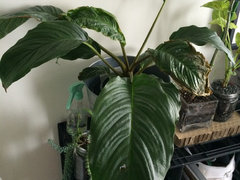
Hi all, I have a bat flower that has a lot of browning tips as it's quite noticeable on the right corner leaf. Few months ago I added some coffee ground on top of the soil, not sure if that's the cause of browning tip. Or it's because not having enough direct sunlight. Hopefully I can receive some answers out there, thanks!User
7 years agolast modified: 7 years agoAny standard potting soil is OK. Keep plant moist but not wet. Move outdoors in shade in the spring. Bring plant inside in winter and water less often. You will think it is dying a slow death when brought inside...but it is not. You can trim off browning leaves. Will bounce back strong in spring.
tapla (mid-Michigan, USDA z5b-6a)
7 years agoMost 'standard potting soils' have inherent issues with excessive water retention, which is why most of the more experienced growers avoid it in favor of making their own or amend it very heavily with coarse ingredients ....... so heavily in fact the coarse ingredients end up being by far the larger fraction of the medium.
Al
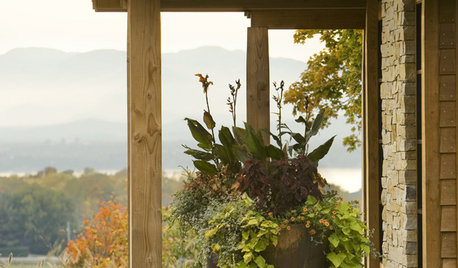


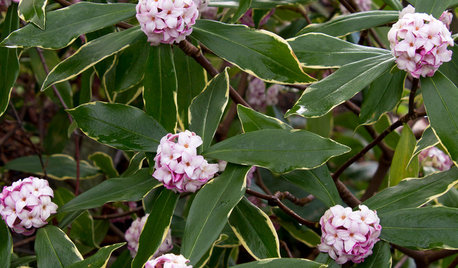
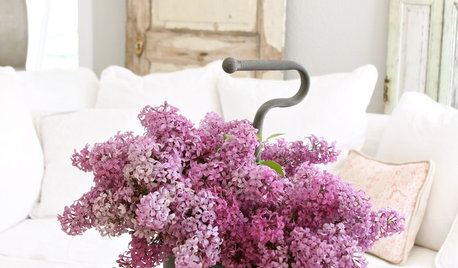
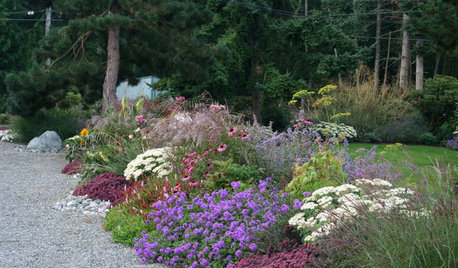










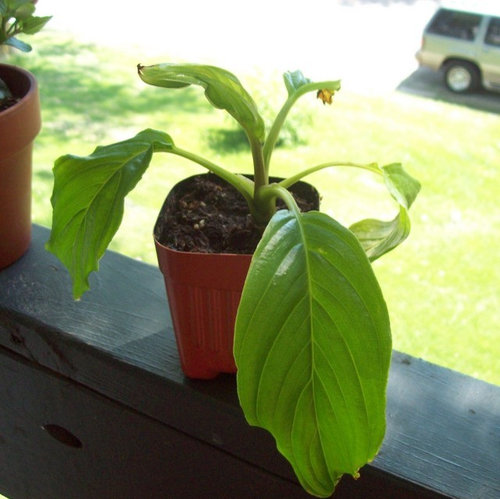
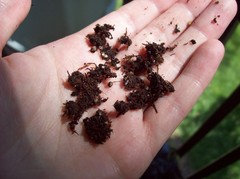
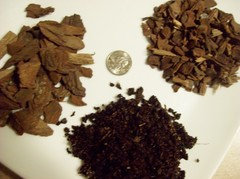





tapla (mid-Michigan, USDA z5b-6a)